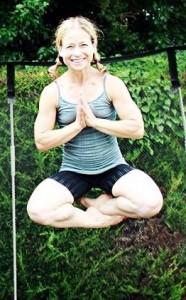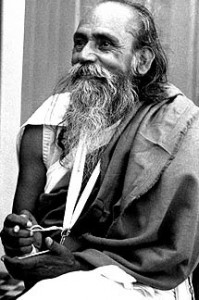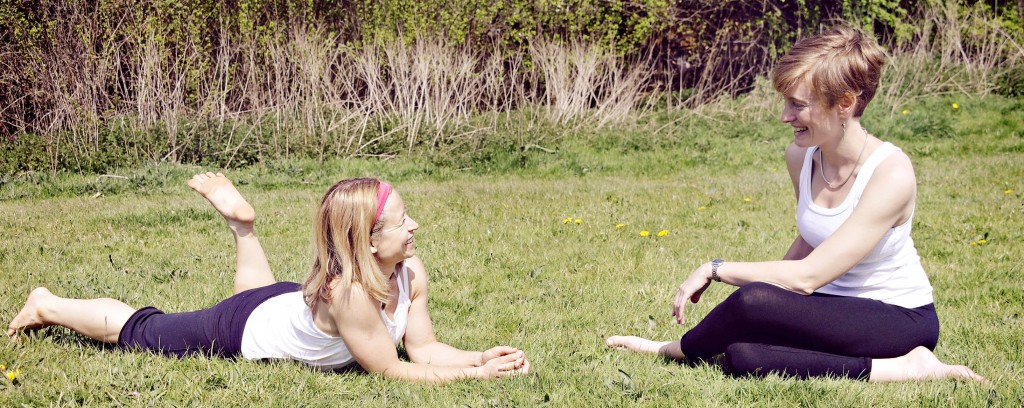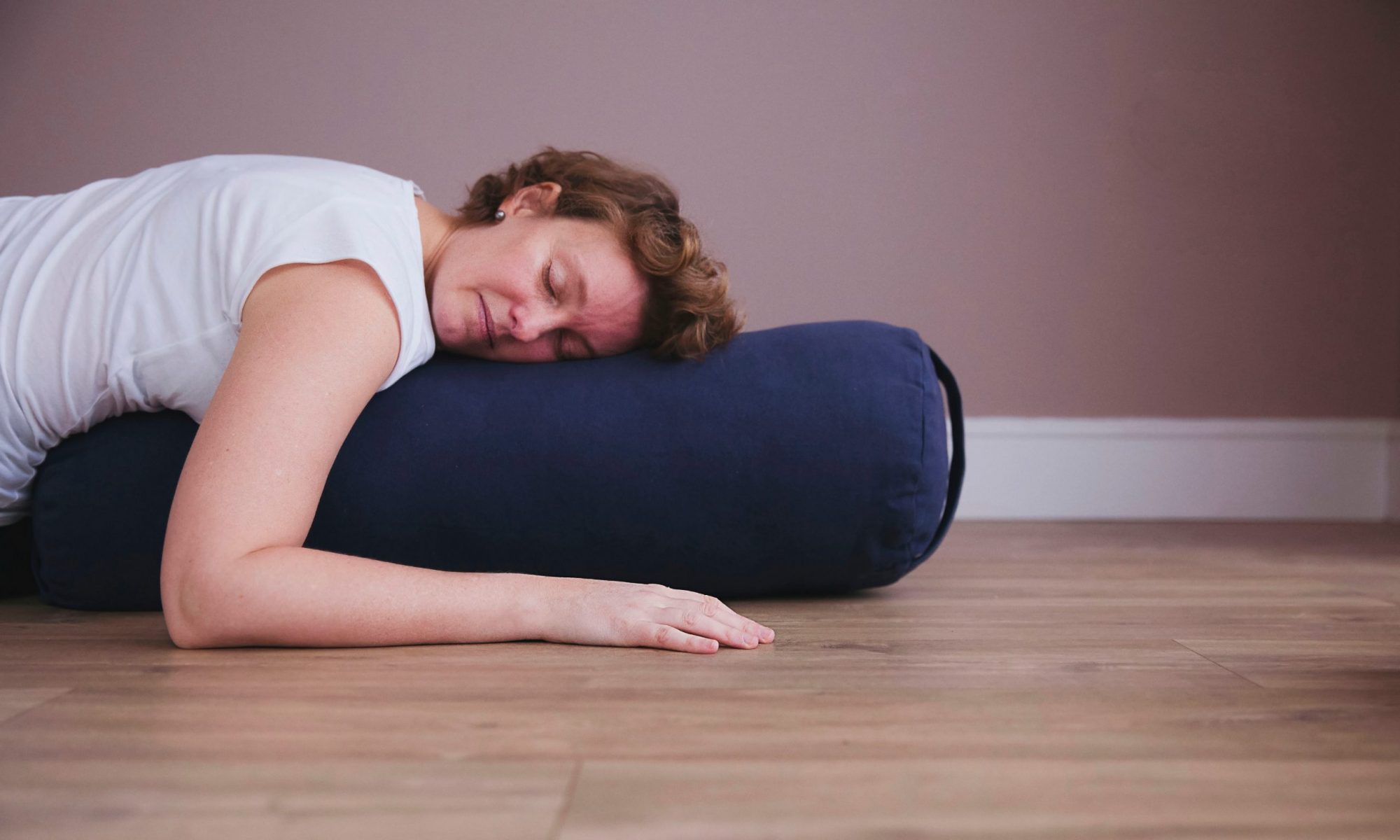As part of my Teacher Interview series on the blog, I bring you Dr April Nunes Tucker.
April and I teach workshops together and her main practice is Ashtanga yoga. Originally from California, she’s been teaching for almost 20 years and her classes are challenging yet fun. I talk to her about the interesting journey that’s brought her to Hertfordshire.
CW: Hello April. There aren’t many people in this neck of the woods that can say they’ve spent four years living in a yoga community. How come you made that decision?

ANT: It was 1994 and at that time I’d just finished my first degree in dance. I was working as a waitress in Southern California and a lovely lady at work suggested that I go visit the Mount Madonna Center (MMC) in the mountains in Northern California.
I arrived late afternoon, walked around, had dinner and pitched my little tent surrounded by 355 acres of beautiful redwoods. I felt so fearful of the place that when the sun rose the next morning I packed up and drove away.
That week I was bothered by how I couldn’t quite put my finger on what had frightened me about the place. In an effort to face my fear, I went back.
I was only there a few minutes when a woman stopped me and asked, “would you like to meet with Babaji? He’s just had a cancellation.”
‘Babaji’ is what devotees call Baba Hari Dass. That was my first meeting with the very important man who gave me the tools to better my life through yoga.
Our meeting was surreal. He’s a silent monk who hasn’t spoken for almost 60 years but I felt as though he could read my thoughts. He asked what I did, what I planned to do, and when I told him that I wasn’t sure, he wrote on his chalkboard, “you could live here.”
It took me less than a month to pack up and move to MMC and I didn’t leave for four years.
CW: How would you describe the Mount Madonna Center?
ANT: Baba Hari Dass is the guru and he teaches classical Ashtanga yoga with an emphasis on meditation. This is different to how we practice Ashtanga vinyasa yoga in the West.
The ultimate purpose of practicing yoga is to develop concentration in order to achieve peace. The classical Ashtanga yoga system consists of eight parts:
- The first of these is the ‘yamas’ – a Sanskrit word meaning ‘restraints’ – living your life in a non-violent way, being truthful, not stealing, continence and non-hoarding.
- There’s also the ‘niyamas’ or observances – having a sense of purity, being satisfied with what you have, undertaking spiritual study and recognising our limited ego-self.
- Doing the physical postures or ‘asanas’. These traditionally belong to the system of Hatha Yoga.
- Practicing pranayama exercises – breath control.
- Observing what’s going on inside, instead of outside (pratyahara)
- Developing concentration (dharana)
- Meditating (dhyana)
- Superconsciousness (samadhi)
CW: What was daily life like there?
ANT: Busy! Wake up early, attempt to meditate, walk from my tent or cabin to the kitchen (my first year there I spent in a tent – cabins were at a premium!), help cook breakfast for anywhere between 100-500 people, take a break walking through the woods or practicing asana.
On certain days, attend a class with Babaji, work the rest of the afternoon on a building site or in the garden or scrubbing toilets, eat dinner, wash dishes, sit around chatting, drink herbal tea and then go to bed.
… And then do it all again the next day. It’s based on the idea of ‘karma yoga’ – doing things selflessly.
CW: Tell me about Baba Hari Dass

ANT: Babaji is an incredible human being and a wonderful teacher. He taught me how to be less afraid, concentrate and accept myself more.
One of his well known quotes is: “Work honestly, meditate everyday, meet people without fear and play” and this is what he teaches. I feel his vow of silence allows his teachings to come through with great clarity.
He has a lovely sense of humour, is compassionate and the most remarkable person I have ever met.
CW: Did you learn lessons that you carry with you in daily life?
ANT: I carry the sadhana practice that was given to me by Babaji. It includes chanting, hand mudras, pranayama, kriyas (methods for calming the mind) and meditation. I try and get up an hour before my kids every morning in order to do the practice. Sometimes it gets cut short when they start clambering over me but the intention’s there.
CW: You taught yoga classes there. Was this your first experience of yoga? What were the classes like?
ANT: I taught asana (the physical postures) and pranayama (breathing techniques). MMC hosts very big retreats – often with around 500 people – so my first teaching experiences were a baptism of fire!
I was on a stage with a sea of people in front of me and a two other ‘demonstrators’ on smaller platforms either side of the stage doing the same asana as I taught it. Scary!
My only previous experience of ‘yoga’ was doing a little class in the staff room of the restaurant where I worked in California with my waitress buddy who followed Babaji.
CW: What were the other people like who lived there with you?
ANT: There were all sorts of different people there. Some were only staying a month just checking out the scene, others were original devotees of Hari Dass since the 1970s. The people there were as varied as people are anywhere.
I will say that I believe living in a community setting magnifies personalities. It is very good training for looking at yourself when you are irritated with others.
CW: There are lots of spiritual/yoga communities in California. Why do you think that is?
ANT: Everyone is searching everywhere. Maybe I’m being generous but California has a lot of natural beauty and people are open to alternative ways of thinking or being. So Eastern philosophies such as yoga flourish.
Also I think many people who live in California are quite privileged and can ‘afford’ to take time out to work on personal development.
CW: You now teach Ashtanga vinyasa yoga – as popularised in the West by Sri K Pattabhi Jois. What do you think is the best thing about teaching yoga?
ANT: For me, teaching a class has three parts: before, during and after. Before the class I enjoy the discipline of attempting to put the reins on my ego. I try to come into class as open and humble as possible.
During class I try to keep my ego in check – demonstrating humbly, allowing for humour and executing compassionate adjustments as much as possible. I really like that sensation of ‘being in the zone’ where I can intuitively flow through a class.
Sometimes after classes I get a real hit of emotion – love or sadness or joy. I like this because it makes me feel very alive. It’s a direct reflection of our human connection.
CW: If you weren’t teaching yoga or looking after two small children what job would you be doing?
ANT: I would probably be lecturing in a university on contemporary dance. That’s always been my field of interest – particularly human movement and the way that it connects people and communicates meaning. I have a PhD in dance and have researched movement repetition.
I like how Ashtanga vinyasa yoga and my daily sadhana practice rely on repeating certain movements and this links nicely with my specialism in dance.
When I go back to the academic world I hope to continue finding ways for dancers and dance academics to become interested in yoga through my research.
CW: How does the Ashtanga vinyasa practice challenge you?
ANT: I feel that the key to the Ashtanga practice is the repetition. To offer an image, the repetition of the practice is like an anchor – the anchor for a boat out at sea.
Imagine a boat floating on the surface of the water with a big heavy chain with an anchor at the end. The anchor’s chain goes down… down through the water until the anchor embeds itself in the sand on the bottom of the ocean floor. That deep ocean floor is like that part of self that knows it’s all ok – the part of the self that knows peace. It is the repetitive yoga practice (the anchor) that can tap into that peaceful part of the self.
The boat represents the part of ourselves that we identify with most readily – the self that’s pulled this way and that by things we desire. It’s the part of the self which is affected by the weather, the currents of the water and the part that gets angry or sad as seagulls shit on it as they fly overhead.

CW: Complete the sentence: A life without yoga would be….
ANT: Discombobulating.
CW: Thank you for your time April.
April can be found in Harpenden teaching a Sunday morning class at Roundwood School and private classes in people’s homes. She can also be found on Facebook and email. April and I teach yin/ashtanga workshops at Breathing Space in Harpenden and the next one is planned for Saturday 21 September from 3pm – 6.30pm. Visit the workshops page for more details and to book.
If you’re interested in learning more about yoga communities/ashrams, I’ve frequented some in India:
- Known as the ‘hugging mother’, Amma’s ashram, Kerala.
- I visit the ashram of the man labelled the ‘sex guru’: Osho’s ashram, Pune.
- My spiritual home of the Sivananda ashram, Kerala.
Have you spent time in yoga communities/ashrams? Or has reading this encouraged you to find out more about them? Feel free to comment below…


